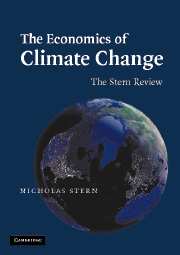Book contents
- Frontmatter
- Contents
- Preface
- Acknowledgements
- Introduction
- Summary of Conclusions
- Part I Climate Change – Our Approach
- Part II Impacts of Climate Change on Growth and Development
- Part III The Economics of Stabilisation
- Part IV Policy Responses for Mitigation
- Part V Policy Responses for Adaptation
- Part VI International Collective Action
- Abbreviations and Acronyms
- Postscript
- Technical Annex to Postscript
- Index
Part II - Impacts of Climate Change on Growth and Development
Published online by Cambridge University Press: 05 March 2014
- Frontmatter
- Contents
- Preface
- Acknowledgements
- Introduction
- Summary of Conclusions
- Part I Climate Change – Our Approach
- Part II Impacts of Climate Change on Growth and Development
- Part III The Economics of Stabilisation
- Part IV Policy Responses for Mitigation
- Part V Policy Responses for Adaptation
- Part VI International Collective Action
- Abbreviations and Acronyms
- Postscript
- Technical Annex to Postscript
- Index
Summary
Part II considers how climate change will affect people's lives, the environment and the prospects for growth and development in different parts of the world. All three dimensions are fundamental to understanding how climate change will affect our future.
These effects will not be felt evenly across the globe. Although some parts of the world would benefit from modest rises in temperature, at higher temperature increases, most countries will suffer heavily and global growth will be affected adversely. For some of the poorest countries there is a real risk of being pushed into a downwards spiral of increasing vulnerability and poverty.
Average global temperature increases of only 1-2°C (above pre-industrial levels) could commit 15-40 percent of species to extinction. As temperatures rise above 2-3°C, as will very probably happen in the latter part of this century, so the risk of abrupt and large-scale damage increases, and the costs associated with climate change – across the three dimensions of mortality, ecosystems and income – are likely to rise more steeply. In mathematical terms, the global damage function is convex.
No region would be left untouched by changes of this magnitude, though developing countries would be affected especially adversely. This applies particularly to the poorest people within the large populations of both sub-Saharan Africa, and South Asia. By 2100, in South Asia and sub-Saharan Africa, up to 145 - 220 million additional people could fall below the $2-a-day poverty line, and every year an additional 165,000 - 250,000 children could die compared with a world without climate change.
Information
- Type
- Chapter
- Information
- The Economics of Climate ChangeThe Stern Review, pp. 63 - 64Publisher: Cambridge University PressPrint publication year: 2007
Accessibility standard: Unknown
Why this information is here
This section outlines the accessibility features of this content - including support for screen readers, full keyboard navigation and high-contrast display options. This may not be relevant for you.Accessibility Information
- 2
- Cited by
